Orchids, with their diverse and vibrant blooms, are a marvel of the plant kingdom.
Among them, the Phalaenopsis, Dendrobium, and Cattleya genera stand out for their unique beauty and graceful presence.
These species have captivated the hearts of botanists and horticultural enthusiasts alike, carving out a special niche in the world of ornamental horticulture.
Their popularity is owed not just to their exquisite flowers but also to their intriguing growth habits and the fascinating variations found within each group.
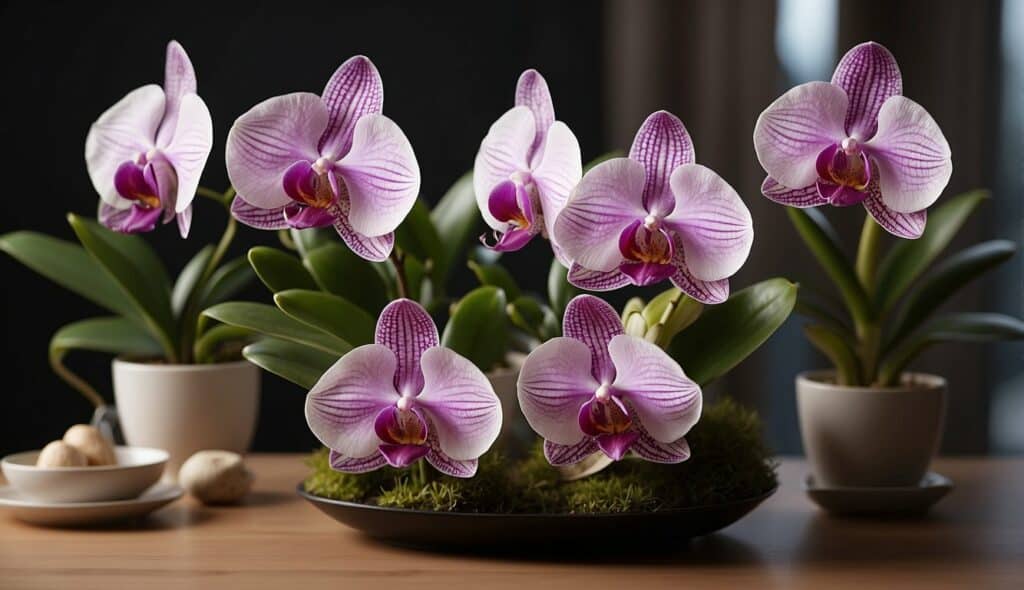
Phalaenopsis orchids, often known as “moth orchids,” are famed for their broad, flat petals and ease of care, making them a favorite choice for beginners.
Meanwhile, Dendrobium orchids boast long, slender stems and a bounty of blooms that come in a riot of colors.
Cattleya orchids, sometimes referred to as the “queen of orchids,” offer a stunning array of fragrant, large blossoms that are frequently used in corsages and bouquets.
The cultivation of these orchids involves understanding their natural environments, which translates to specific care requirements in a home or greenhouse setting.
The allure of these orchid varieties lies not only in their beauty but also in the challenge they present to growers.
It is a delightful pursuit for many to replicate the conditions these orchids need to thrive, and success yields the reward of magnificent floral displays.
In exploring Phalaenopsis, Dendrobium, and Cattleya, enthusiasts uncover the subtle complexities of orchid care, from light levels and watering schedules to temperature control and repotting techniques.
Orchid Basics: Understanding Phalaenopsis, Dendrobium, and Cattleya

These three orchids are beloved for their stunning blooms and diverse growth habits, making them popular among both novice and experienced growers.
Phalaenopsis: The Moth Orchid
Phalaenopsis, commonly known as the moth orchid, thrives in warm conditions with low to medium light.
Its long-lasting flowers, which can bloom multiple times a year, resemble moths in flight.
These orchids are often found with aerial roots growing out of a central stalk and may benefit from weekly watering and regular fertilizing with a balanced, water-soluble fertilizer.
Dendrobium: The Bamboo Orchid
Dendrobium orchids, also known as bamboo orchids, have cane-like stems that store water, allowing them to withstand periods of drought.
They prefer bright light and a drop in temperature at night to encourage blooming.
To care for Dendrobiums, one should water them less frequently in the winter and more often during the growing season, coupled with monthly fertilization.
Cattleya: The Corsage Orchid
Cattleyas are known as the corsage orchid for their large, showy flowers and are often used in wedding arrangements.
They require bright light and thorough watering, followed by a period of drying.
Cattleyas are typically grown in coarse potting media, which allows for good air flow around the roots.
A balanced fertilizer should be applied every other week during active growth.
Cultivation and Care
Successful orchid cultivation hinges on understanding specific care requirements.
These elegant plants thrive under precise conditions, and each variety has its nuanced needs.
Watering Requirements
Phalaenopsis orchids require watering every 5 to 7 days, depending on the humidity.
It’s crucial to allow the potting medium to dry slightly between waterings.
In contrast, Dendrobiums need more frequent watering during the growing season, roughly every 2 to 4 days.
Cattleyas, on the other hand, require watering once a week after the medium has nearly dried out.
Light and Temperature
For all three types, bright, indirect light is the sweet spot. Phalaenopsis prefers consistent temperatures of 65-85°F.
Dendrobiums enjoy warmer daytime temperatures but benefit from a 10-15°F drop at night.
Cattleyas thrive in daytime temperatures of 70-85°F and a slight dip at night to about 60-65°F.
Avoid placing them in direct sunlight, which can scorch their leaves.
Soil and Repotting
A proper potting mix is essential. Phalaenopsis and Dendrobium orchids flourish in a bark-based mix, promoting good drainage and air circulation.
Cattleyas often favor a coarser medium. Repotting should be done every 2 to 3 years or when the medium breaks down, ideally in the spring after flowering.
Fertilization and Blooming
Fertilize orchids every 1 to 2 weeks during active growth using a balanced fertilizer. Reduce to once a month when dormant.
For blooming, Phalaenopsis typically flowers once a year, while Dendrobiums and Cattleyas can bloom multiple times.
A decrease in nitrogen and a boost in phosphorus can encourage the flowering process.
Propagation Techniques
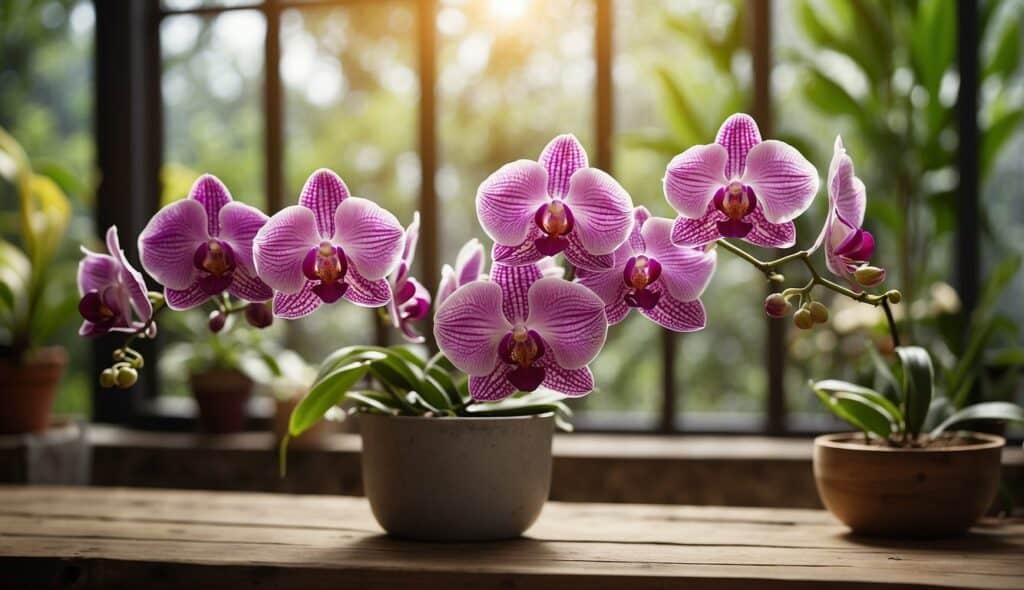
Propagating orchids can be a rewarding experience for gardening enthusiasts.
It requires precision and care, with each species having its own set of propagation protocols to ensure success.
Seed Propagation
Orchids produce tiny seeds that lack endosperm, making their germination process complex and reliant on symbiotic relationships with fungi.
Seed propagation often happens in sterile laboratory conditions through a method known as flasking.
- Collection: Seeds are harvested from the seed pod when it turns yellow and starts to split.
- Sterilization: Seeds are sterilized with a bleach solution to prevent contamination.
- Sowing: The seeds are sown in agar-based media within sterile glass containers.
- Cultivation: They are kept under controlled light and temperature until they develop into protocorms and eventually young plants.
Vegetative Propagation
This method is faster than seed propagation and is commonly used by growers to produce clones of a parent plant, maintaining its desirable characteristics.
-
Division: Cattleya and Dendrobium can be propagated by dividing the pseudobulbs, ensuring each section has at least one growth eye.
- Dendrobiums are divided when the plant is large enough, with groups of 3-5 canes.
- Cattleya divisions depend on the plant’s size but usually involve 3-4 pseudobulbs per division.
-
Keiki Production: Phalaenopsis can produce keikis (baby plants) on the flower spike.
- Applying keiki paste (hormone paste) to the nodal eye can encourage the growth of a keiki.
- Once the keiki develops roots and leaves, it can be separated and potted individually.
-
Back Bulbs: Back bulbs are older pseudobulbs without leaves and can be removed and induced to grow into new plants.
- These require a humid environment and patience, as it may take some time before growth occurs.
- It’s important to keep them in a well-draining medium until new shoots appear.
Orchid Pests and Diseases
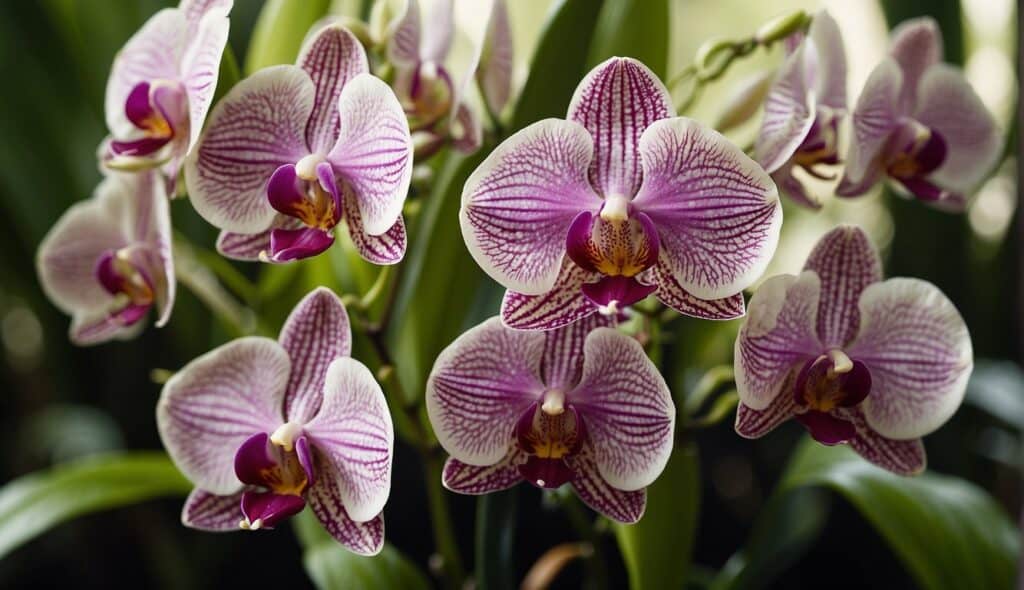
Cultivating orchids can be challenging due to the range of pests and diseases that may affect them. Proper identification and management are crucial.
Common Pests
Spider Mites: These tiny arachnids thrive in dry conditions and can cause yellowing or bronzing of leaves.
Regular checks under leaves and increased humidity can deter them.
-
Aphids: Small and often green, they frequently cluster on new growth.
A strong water spray can dislodge aphids, and insecticidal soaps are effective treatments.
-
Mealybugs: Recognizable by their white cottony appearance, mealybugs can be eliminated using a cotton swab dipped in alcohol or using systemic insecticides.
Scale Insects: Hard or soft-bodied, these pests attach to leaves and stems.
Manual removal or horticultural oils work for light infestations; insecticides may be needed for severe problems.
Disease Prevention and Treatment
Fungal Infections: Signs include leaf spots and root rots.
Good air circulation and avoiding waterlogged media are essential preventative measures. Infected parts should be removed, and fungicides may be needed.
- Bacterial Diseases: Indicated by a foul smell or watery lesions, these issues demand immediate removal of affected tissue and application of bactericides.
Sterilization of tools is also key to prevention.
Viral Diseases: These are often incurable and can exhibit as mosaic patterns or streaking on leaves.
Infected plants should be isolated, and it’s paramount to maintain strict hygiene to prevent spread.
Frequently Asked Questions
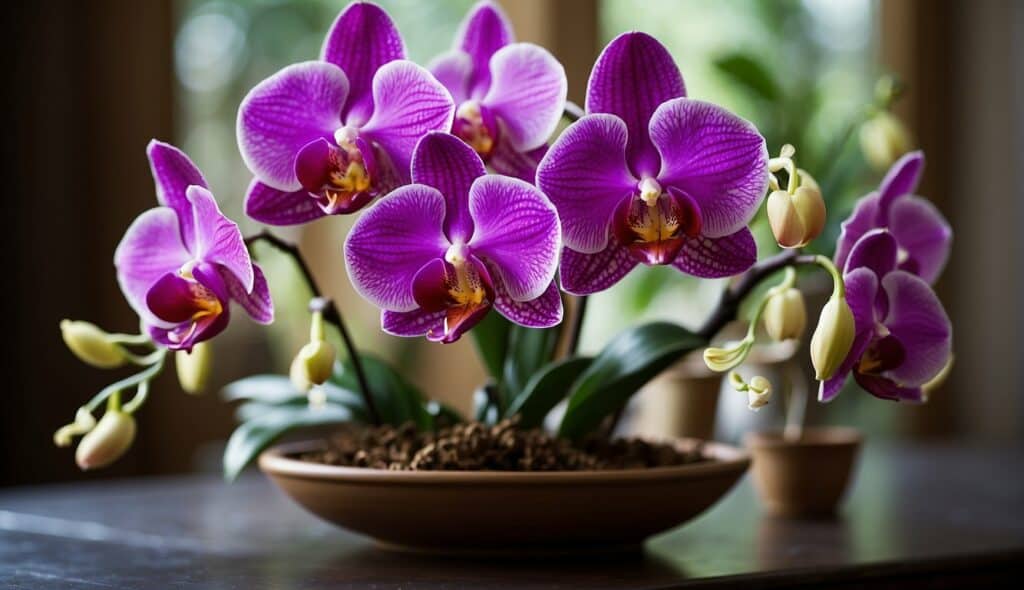
Orchid enthusiasts often have questions on how to best care for their beloved plants.
The following frequently asked questions cover essential tips and specific needs for different orchid varieties.
What care tips are essential for maintaining the health of Phalaenopsis orchids?
Phalaenopsis orchids require moderate light and consistent moisture to stay healthy.
It’s important to water them weekly, allowing the potting medium to dry slightly between waterings.
How can I differentiate between different types of Dendrobium orchids using images?
When using images to identify Dendrobium orchids, look for differences in the pseudobulbs, leaves, and flowers.
The size, shape, and color patterns of these features are indicators that can help distinguish between the various types.
What are the ideal conditions for growing a Cooktown Orchid successfully?
The Cooktown Orchid, a type of Dendrobium, flourishes in warm temperatures with high humidity and ample airflow.
Bright, indirect light promotes vibrant growth and flowering.
What are the light requirements for a Moth orchid to thrive?
Moth orchids, also known as Phalaenopsis, prosper in bright, indirect sunlight. Avoid direct sun exposure to prevent leaf burn.
East-facing windows are typically ideal for these orchids.
How can one identify various orchid species by their leaves?
To identify orchid species by leaves, observe the leaf shape, color, texture, and pattern.
Differences such as the presence of mottling or the thickness of the leaves are useful for identification.
What steps should I follow to nurture a Dancing-lady Orchid indoors?
To care for a Dancing-lady Orchid indoors, place it in a well-lit area away from direct sunlight, maintain consistent watering without letting the plant sit in water, and ensure high humidity and good ventilation.






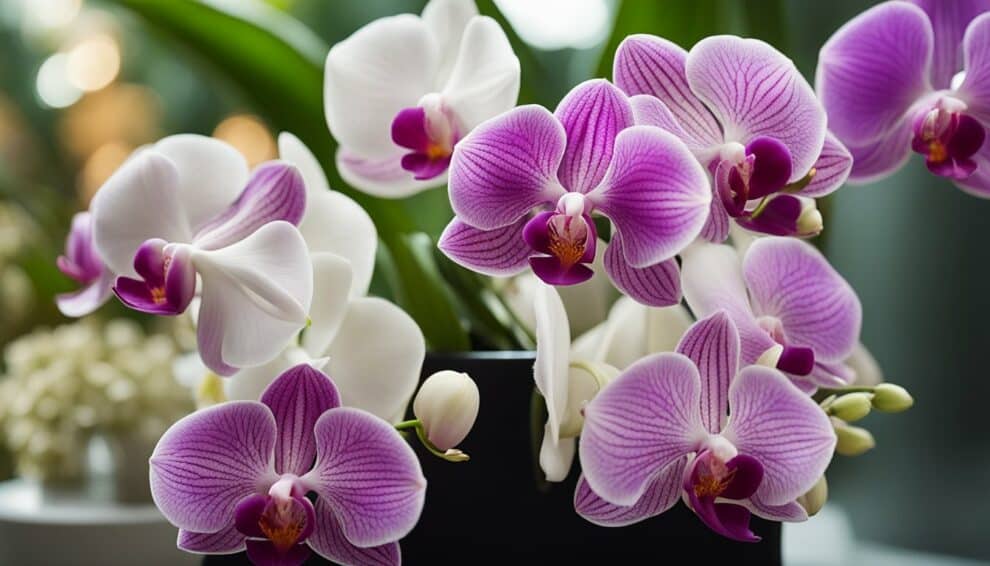






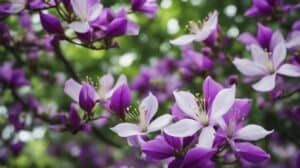

Add Comment